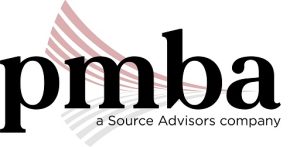- An ITC equal to 9% of qualified investment in R&D buildings and tangible personal property
- Taken in place of the regular ITC
- Credit can reduce the tax to the higher of the alternative minimum tax or fixed dollar minimum tax
- New businesses take a refund of unused credit*
- Unused credits can be carried forward for 15 years (10 years for personal income taxpayers)
How to Obtain the Credit?
No application or pre-certification required. Taxpayers calculate the credit using Form-CT-46.
Refundable/Transferable Tax Credit – Yes*
New York Qualified Emerging Technology Companies (QETC)
A QETC is a company located in New York State with total annual product sales of $10 million or less, and meets either of the following:
Primary products or services that include:
• Advanced materials and processing technologies
• Engineering, production, and defense
• Electronic and photonic devices and components
• Information and communications technologies
• Bio- and Nano-technologies
• Re-manufacturing technologies
Or
• The company has research and development (R&D) activities in New York State, and its ratio of R&D funds to net sales equals or exceeds the average ratio for all surveyed companies, as determined by the National Science Foundation
A qualified QETC is entitled to a credit on their qualified investments as follows:
• 10% of qualified investments in certified QETCs with a useful life of four years
• 20% of qualified investments in certified QETCs with a useful life of nine years
Qualified investments do not include investments made by current owners of the QETC. Owner is defined as an entity that owns more than 10% interest in a QETC.
A qualified QETC is also entitled to an Employment Tax Credit of up to $1,000 per full-time employee. The credit is available for three consecutive tax years and has other limitations.
How to Obtain the Credit?
Certification by the New York State Department of Taxation and Finance is required before you can claim the credits. Companies must file form DTF-620 30 days prior to the beginning date of certification. The company will be notified about its certification within 30 days by New York.
Refundable/Transferable Tax Credit- No

New York City Biotechnology Tax Credit (Expires 12/31/2015)
This NYC Biotechnology Tax Credit allows investors and owners of QETCs focused on biotechnology to claim a refundable tax credit against the General Corporation Tax and Unincorporated Business Tax for amounts paid or incurred for certain facilities, operations and employee training in New York City. To claim the Biotechnology Tax Credit, the QETC must be:
•located in NYC
•have total annual product sales of $10 million or less
•have either its primary products or services classified as emerging technologies, or it has R&D activities in NYC
How to Obtain the Credit?
Companies are required to submit an application by January 15th immediately following the year of the credit, and the Department of Finance will make a determination of the amount of biotechnology credit the taxpayer may claim and mail a certificate of eligibility to the taxpayer indicating that amount on or before February 15th.
Refundable/Transferable Tax Credit- Yes


